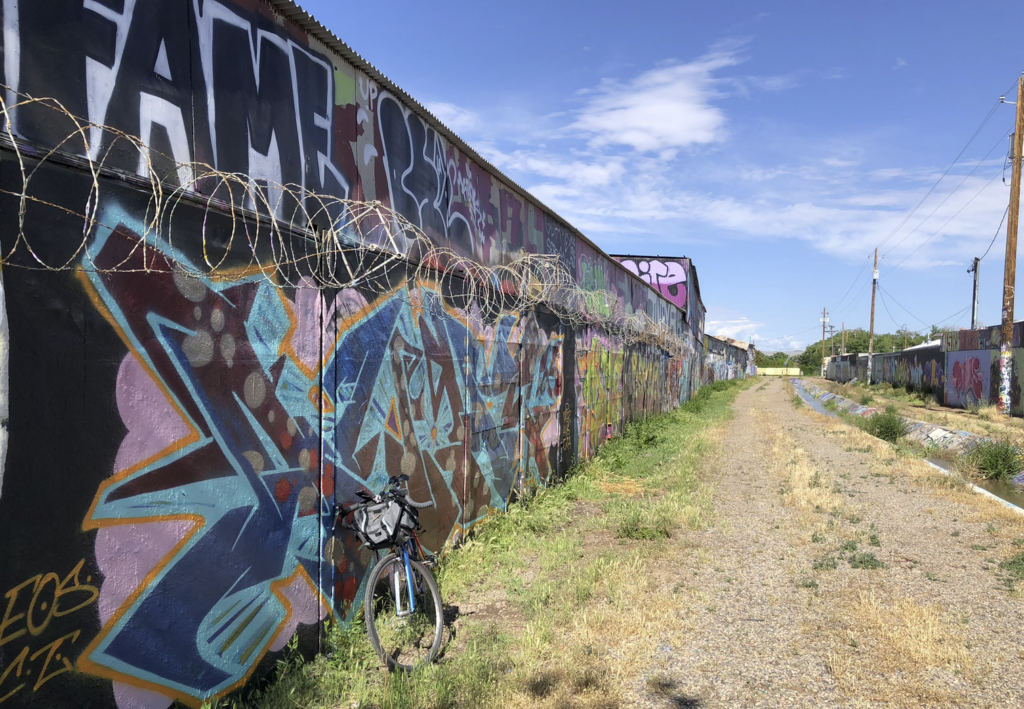
The Stotts Lateral, off the 6100 block of North Second, Albuquerque, New Mexico. May 2023
My search for Albuquerque’s “Most Urban Irrigation Ditch” took us yesterday to the Stotts Lateral in the North Valley. The Stotts is about a half mile long, carrying water under the railroad tracks from the Alameda Lateral to the Alameda Drain. The east half is underground. The west half, tiny and concrete-lined, is an urban art gallery.
I’d been there before on one of those “never quite lost but I’ve no idea where I am” bike rides. We’d come in from the back side on one of our searches for safe places to cross the railroad tracks, and I knew it was wonderful and a good place to cross the tracks, but I couldn’t remember quite where it was.
The railroad corridor through Albuquerque’s North Valley matters a great deal for the new book Bob Berrens and I are writing, because you can’t make sense of the evolution of Albuquerque’s relationship with the Rio Grande without understanding the way the construction of the railroad in 1880 changed the community’s relationship with the river by changing where we were and what we were doing there.
Our story is thus about the tension between old rural subsistence ways and urbanity/modernity.
On this stretch of Second we’ve got a weirdly lovely little irrigation ditch slipping between Acme Iron and Metal (“the largest scrap metal recycler in New Mexico”) and an aging min-storage lot.
The graffiti along the railroad corridor is, in general, one of Albuquerque’s great art collections. The Stotts Lateral is one of the collection’s great gallery spaces.
I’m pushing our “gardening” metaphor to the breaking point when I say this, but as Scot and I rode down the Stotts yesterday, there was a guy with a spray can in one hand talking on a cell phone in the other, painting a magnificent huge tag. The sweep of his arm, the line confidence as he sprayed almost casually while talking, was like a slow graceful dance.
He was tending this particular garden.
I wonder who Stotts was?

John, are you a native of Albuquerque?
Patrick – I was born and lived the first half of my life in Southern California. I’ve been here since 1990. I grew up in and around the extraordinary cultural ferment of post-World War II L.A. My dad was one of a generation of artists educated with GI bill money and drawn to that creative/cultural ferment. That was the world that made me, I am inextricably Californian.